But there's so much more to side deck theory in Goat Format - and, really, any format. In order for the side deck to be effective, we have to understand what we might face in a tournament setting, how our deck is weak against what we might face, and how to counter it.
What I want to focus on with this article is the theory behind the side deck - how we approach building it and how we can make our side decks more effective. This way, you can apply this logic to the options you are considering for your side deck, and help you approach more matchups more effectively - and, as a result, win more games. I'm going to be focusing mostly on side deck theory for Goat Control, but many of these points can be used for any deck's side deck.
Intro to Side Deck Theory in Goat Format
The Goal of the Side Deck
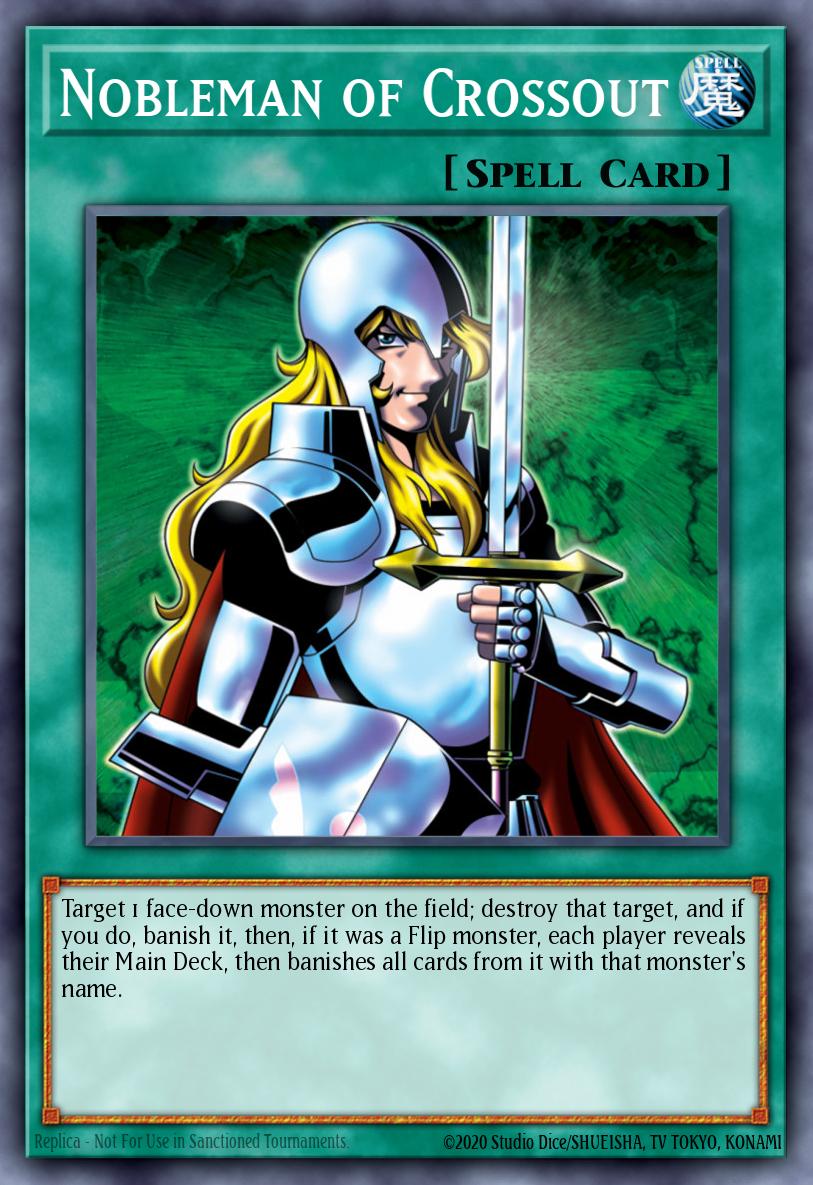 As in any game, the goal of our side deck is to swap out cards that don't help us win and swap in cards that will. A good example is Nobleman of Crossout - you don't need it against a deck that runs no Flip monsters. So we'd rather swap those out for cards that would actually help us instead of sitting uselessly in our hand. This is side deck theory 101, really.
As in any game, the goal of our side deck is to swap out cards that don't help us win and swap in cards that will. A good example is Nobleman of Crossout - you don't need it against a deck that runs no Flip monsters. So we'd rather swap those out for cards that would actually help us instead of sitting uselessly in our hand. This is side deck theory 101, really.Every deck is weak against something. For instance, Goat Control is weak against any deck that can generate and maintain lots of advantage. It's also somewhat weak against decks that force simplified game states, such as aggro. Goat Control wants to have lots of options at its disposal on any given turn. If it doesn't, it becomes much easier to beat.
So what we want to do is build a side deck that allows us to counter what opposing decks are good at. The issue comes down to the cards we want to run, but more importantly, how those cards are used, and how they will increase our odds against a specific deck.
There are two main approaches: versatile counters, and hard counters. Versatile counters are cards that can be used against a variety of different decks effectively. Hard counters are cards that can completely shut down the opposing deck's strategy. There's a lot of theory out there regarding which method of side decking is better. You can search around and read about it yourself.
Versatile Counters
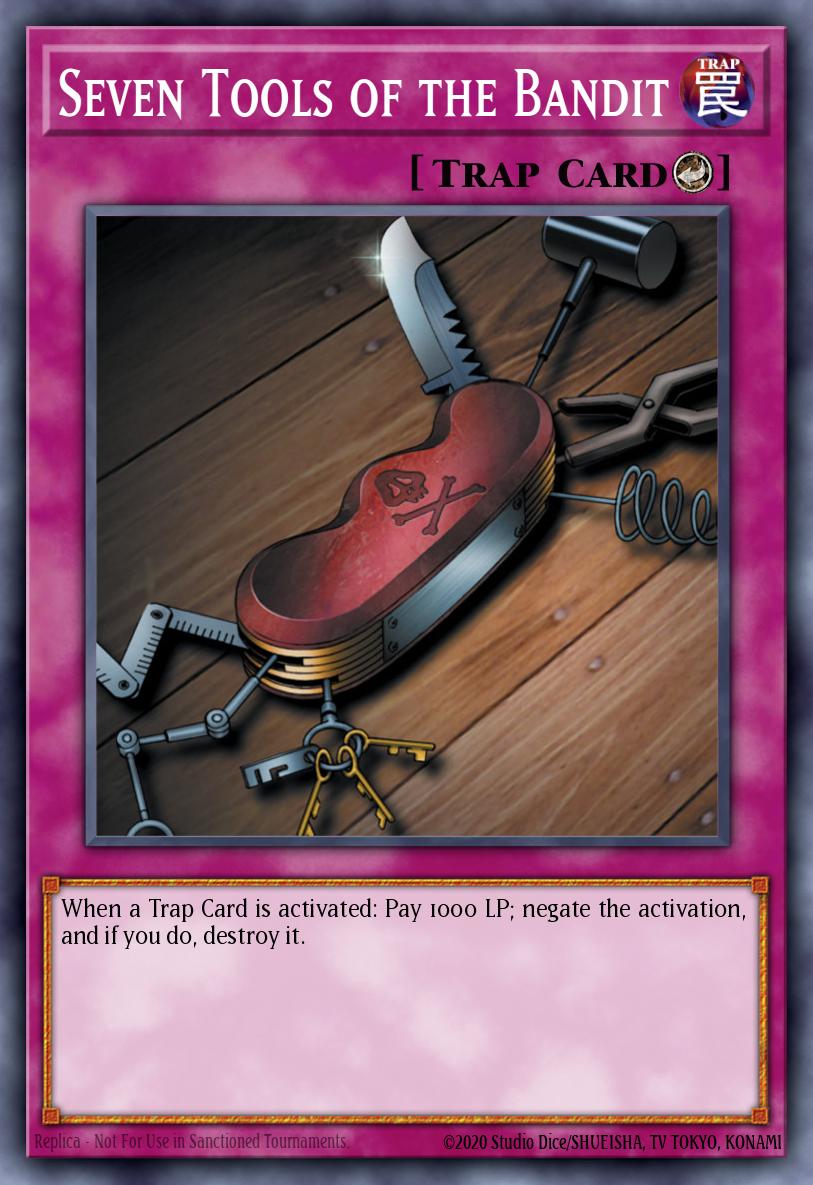 Versatile side deck cards are cards that help against more than one deck. A good example is Seven Tools of the Bandit, actually. Seven Tools is used primarily as a counter against Solemn Judgment, but there's a lot of decks that rely on Solemn in order to stay in the game. PACMAN, Flip Lock, Burn, and anything with a Field Spell come to mind. That's four or more decks that Seven Tools can effectively counter.
Versatile side deck cards are cards that help against more than one deck. A good example is Seven Tools of the Bandit, actually. Seven Tools is used primarily as a counter against Solemn Judgment, but there's a lot of decks that rely on Solemn in order to stay in the game. PACMAN, Flip Lock, Burn, and anything with a Field Spell come to mind. That's four or more decks that Seven Tools can effectively counter.Another example is Mystic Swordsman LV2. Its ability to destroy any face-down monster with its effect, rather than by battle, makes him an effective counter to decks such as PACMAN, or anything running the Spy engine.
Regardless, these cards highlight the concept of versatility when it comes to side deck theory in Goat Format. We want versatile cards that are going to be good against a variety of different decks. This is especially true if we're unsure of what will see high representation in any tournament we're playing. But they aren't the only cards. Some decks require hard counters, as sometimes versatile counters just can't get the job done.
Hard Counters
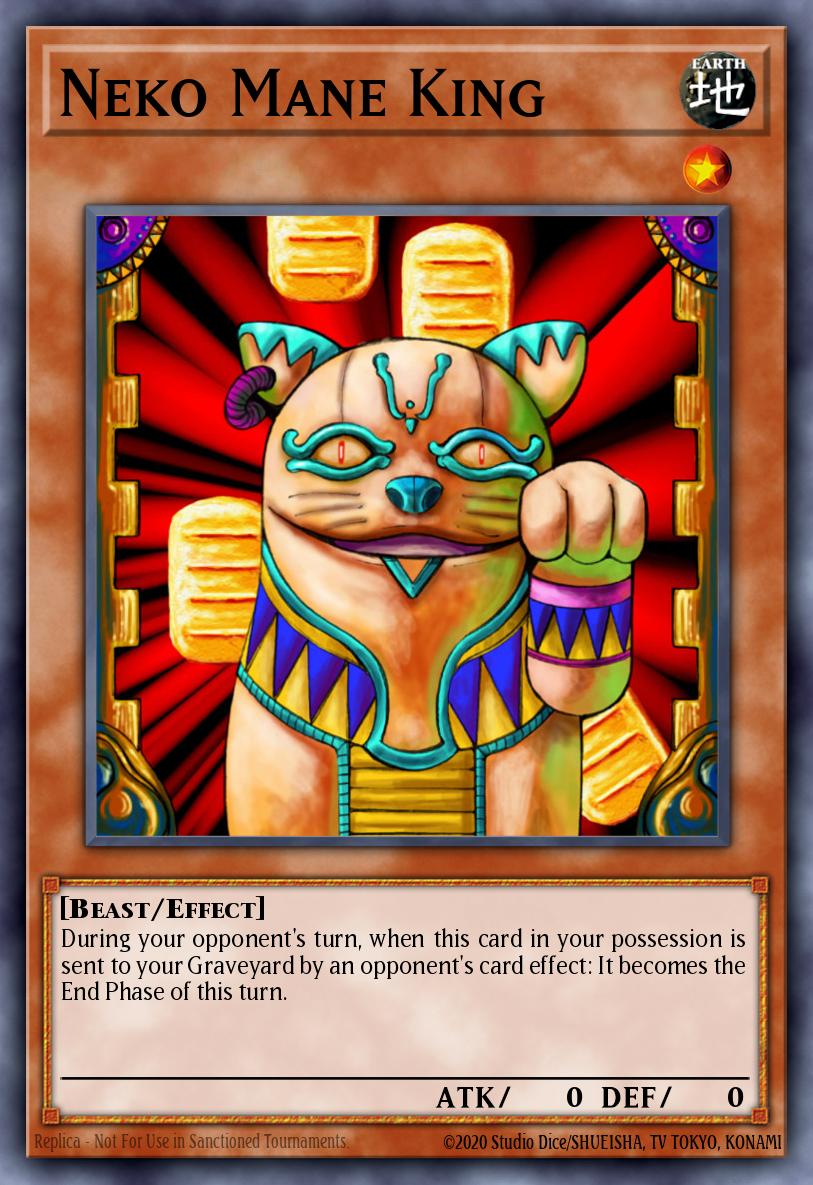 Hard counters are basically what they sound like: cards that shut an opposing strategy down hard. Take a look at Neko Mane King - really, its only use is against Empty Jar, because it disrupts their combo. But that's it. You only really side Neko Mane if you know that Empty Jar is going to be a thing in your meta.
Hard counters are basically what they sound like: cards that shut an opposing strategy down hard. Take a look at Neko Mane King - really, its only use is against Empty Jar, because it disrupts their combo. But that's it. You only really side Neko Mane if you know that Empty Jar is going to be a thing in your meta.Much of what you prefer comes down to your play style. Personally, I have a mix of both versatile counters and hard counters. Against a deck like Empty Jar, there's not a lot you can side that is going to be effective. And with hard counters, it often is going to come down to how well you play as opposed to simply just drawing your outs.
But then again, Empty Jar is most decidedly a rogue strategy, unlike decks like Chaos, Aggro, or PACMAN. And because those decks have similar weaknesses, we can use versatile counters to conserve space in our side deck while still shoring up our own deck's weaknesses.
Understanding Deck Strengths and Weaknesses
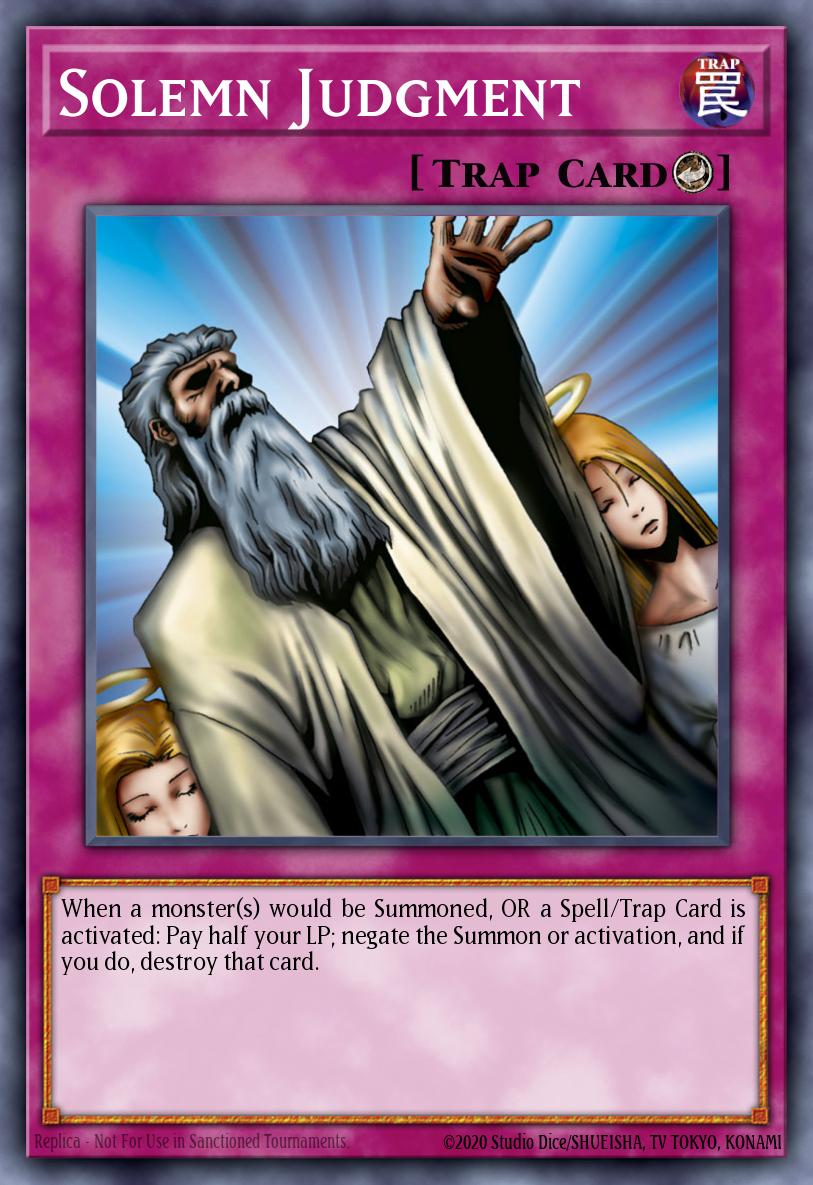 It's important to know what your own deck is weak against, but it's also important that you understand what the opposing deck is good at. For instance, Chaos Control is great at maintaining advantage and fueling their graveyard for Chaos plays. It neutralizes Airknight Parshath as an advantage generator and, depending on the variant, can maintain field presence remarkably well. Chaos Control wants to win the numbers game, so our goal should be to try to weaken their ability to do that.
It's important to know what your own deck is weak against, but it's also important that you understand what the opposing deck is good at. For instance, Chaos Control is great at maintaining advantage and fueling their graveyard for Chaos plays. It neutralizes Airknight Parshath as an advantage generator and, depending on the variant, can maintain field presence remarkably well. Chaos Control wants to win the numbers game, so our goal should be to try to weaken their ability to do that.PACMAN is the same basic way - you want to approach that matchup with cards that will allow you to maintain the numbers and neutralize the deck's best plays. In this, Creature Swap can be a good card to play. There's debate on whether Mind Control or Creature Swap is better, but the idea is the same for both: take an opponent's advantage generator and use it as your own. In that way, we disrupt their plays, maintain the numbers, and whittle away at them.
This is also why I like Seven Tools right now. Quite a few decks that we want to side for play Solemn Judgment, and if we can force them to pay a high amount of LP without getting the negation they want, we both maintain advantage and stay ahead in the numbers game.
Understanding these weak points is a crucial part of side decking effectively, and it takes some serious thinking and discussion about what you expect to face and how best to counter it based on what your deck does well and what its weak points are. This is a great segue into my next point, understanding the metagame as a whole.
Understanding the Metagame
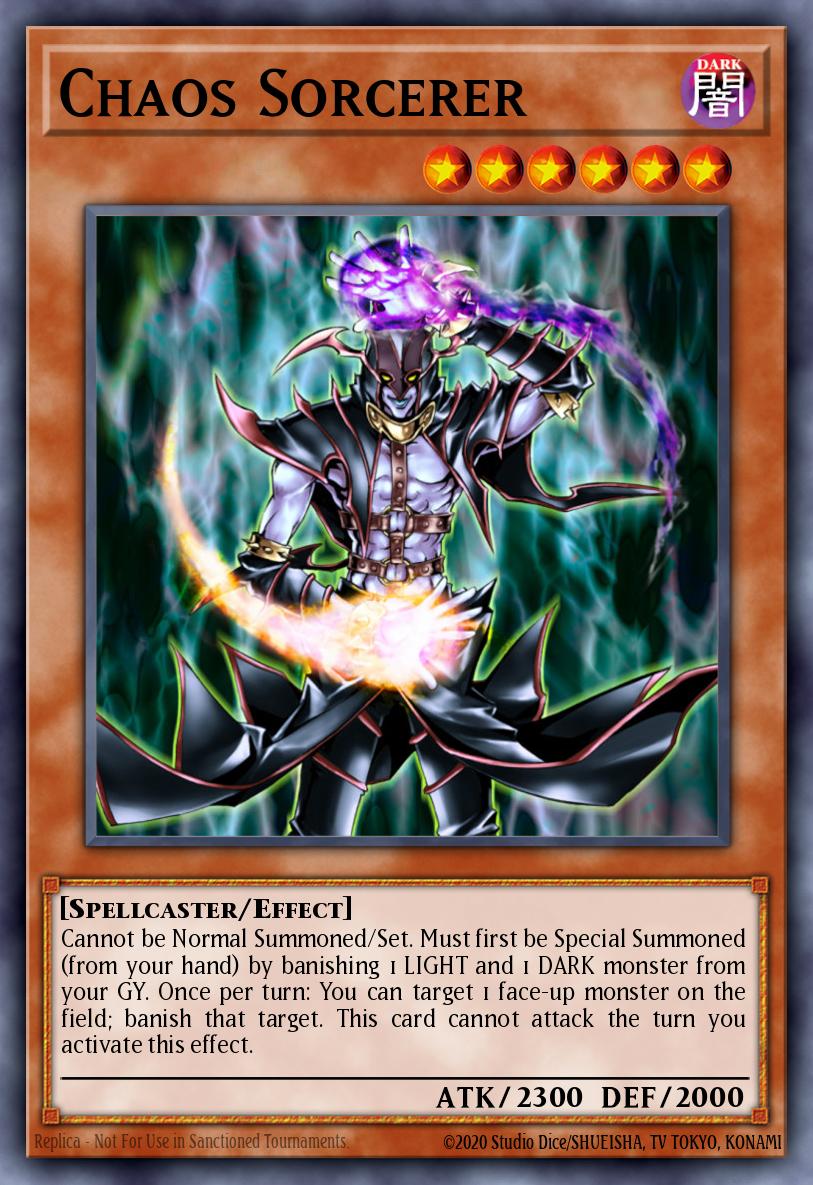 Simply understanding the metagame you're playing in is important when building a good side deck. Every metagame is different. For instance, Nostalgic Duelist still plays with Exarion Universe, so you can expect to play a lot of Standard Goat mirror matches. DuelistGroundz has a lot of Chaos variants in them, so side decks are built with those decks in mind.
Simply understanding the metagame you're playing in is important when building a good side deck. Every metagame is different. For instance, Nostalgic Duelist still plays with Exarion Universe, so you can expect to play a lot of Standard Goat mirror matches. DuelistGroundz has a lot of Chaos variants in them, so side decks are built with those decks in mind.You have to know what your opponents are playing. And this is a great thing about Goat Format: on the whole, the meta doesn't change a whole lot. Some will have more alt-win than others, some will have more Chaos than others. But, on the whole, the decks are pretty static, so you can take your time, research the format, and build a competent side deck even if you haven't played much.
Of course, it takes a strong understanding of the fundamentals of Yu-Gi-Oh!, but that's true no matter what format you're playing. Regardless, you want to make sure that you at least have an idea of what you may face, because if you don't, you have no idea what to put in your side deck.
If you don't know the metagame, ask. If you have no one to ask, research. And if you can't do research, how are you reading this?
Conclusion
Ultimately, card value theory has to be at the forefront of our side deck crafting. We want to do as much as we can with as little as possible, and this goes for the side deck as well. There's obviously a lot more that goes into building a good side deck, but if you keep these basics in mind, you should at least be able to construction something that isn't just fifteen random cards.
That's it for this time. As always, you can contact me via email at [email protected], hit me up on Discord, or shoot me a message on the forums.




